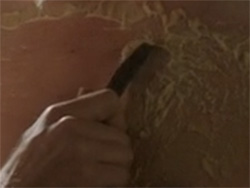This question inevitably is always asked by the person seeking to purchase a first straight razor. I’ve answered it countless times and usually in the same manner espousing the conventional wisdom of: a ” 5/8″ blade, full hollow, & round point”. Historically, this always leads people to the Dovo Best. The question still remains, is the Dovo Best really the best straight razor for a beginner? And why?
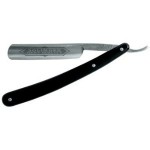
Characteristics of a Good Starting Razor
Before we explore this topic any further, we need to examine the characteristics that make a good starting razor, starting with hollowness. A full hollow is recommended for two reasons: 1) it is vastly easier to self maintain than a wedge or other thicker grind, and (most importantly) 2) you can’t buy a wedge, 1/4 hollow, or true half hollow for a reasonable price. The full hollow razor became the dominant straight razor form because it is vastly easier to sharpen. It allows the user to simply lay the razor flat on the hone and the spine provides a ready-made guide. It’s almost fool-proof. In addition, with the advent of the double wheeled grinding machine, full hollow razors are vastly cheaper to produce as they require much less labor.
A round point is recommended because a square point or spiked point is, well, pointy. While you can grind off the very tip and round it out, round points are readily available. If the very tip is not rounded off, it becomes a likely source of pain if you accidentally jab it into your skin. Also, it can scratch your strop. But most importantly, you can’t find any square points available unless you buy vintage. So, while there’s really no compelling reason you need to purchase a round point over any other point, the fact remains that round points are the dominant form in the marketplace today.
5/8″ is touted as the ideal width for a starting razor. This is simply because it is in between what is considered a small razor, 4/8″ and under, and a large razor 6/8″+. The disadvantage of a 4/8″ blade is that it is harder to judge the angle with and lacks the heft of a thicker razor, therefore it lacks momentum to carry the blade through the cut. The disadvantage of a 6/8″ blade is that it is heavy and considerably larger when compared to a 4/8″ blade. The 5/8″ is therefore the easy compromise. However, there is no compelling reason that you need to start with a 5/8″ blade. It is simply the practical in between choice. There’s no wrong answer. Only what you as the user would prefer. So, if you think you want a more nimble blade, you should buy a 4/8″ razor. If you want more heft and an easier way to judge angles, then buy a larger razor. However, a 7/8″ razor is generally considered very hard to wield and should be avoided.
Establishing that all of these conventional wisdom’s boil down to purely personal preference and availability, what then are the characteristics that are absolutely needed?
1. Shave readiness
2. Made from high carbon hardened steel. Stainless steel comes in high carbon varieties too.
3. 6/8″ or under
4. Within budget
Introducing the Contenders
So, now that we have actual criteria upon which to judge the contenders for best new straight razor, let’s see what is available. Starting with the Dovo Best, any razor that costs more than the $120 price tag, cannot be in the running as it would violate rule #4. Thus, we are left with the following: Dovo Best, Giesen & Forsthoff, Gold Dollar, & Fromm. Other razors that get purchased often are razors made in China out of 400 stainless, Pakistani razors, and GB Buckingham razor (also made in Pakistan). None of those razors are real and cannot be sharpened, thus violating rule #2.
Do Any Measure Up?
Out of all of the contenders, the Dovo Best is the clear front runner. If we ignore the $120 price tag, the Dovo Best has it all. It comes shave ready from the factory, it has decent aesthetics, the quality control is pretty good (aside from a few bent razors and misaligned grinds), and it works. Plenty of people buy this razor. But is it the best option for a starter razor?
So, the Dovo Best gets a lot of pluses. However, when compared to other straight razors in higher price brackets, the lowly “Best” just doesn’t look as good as it once did. The scales are made from plastic and the feel will never change. The design is uninspiring. In every single way, it’s simply mediocre and simple. It’s functional and that’s really it. And for $120, it’s a very very large financial commitment.
Giesen & Forstoff and Fromm belong in the same category, even though G&F is a slight step above Fromm. Both makers do not sharpen their razors to shave ready from the factory, they charge about the same price, $55-$75. While they have the same aesthetic qualities as the Dovo, unfortunately both makers don’t get terribly good reviews. In my experience, both brands do hold an edge and are made from hardened steel. However, the edge they take is not as good as Dovo and the edge holding qualities don’t quite measure up. G&F has made some improvements in this area over the years, but still needs work. Also, both razors need some serious work before they are shave ready, a big minus and additional cost to the end user. Therefore, I cannot recommend either of these razors as the best beginner straight razor. They make for decent gifts though. Also, G&F offers some nice (if roughly finished on the inside) scales.
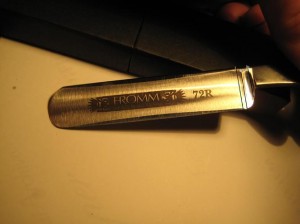
You can see the poor master grind as revealed by the uneven spine wear
So, that leaves us with the Chinese made Gold Dollar. Now, before you begin, you must realize that China has become the manufacturing hub of the world. Nearly everything is made there. From the inexpensive to the luxury brands, China makes it all. But can they make a straight razor?
The answer is actually yes. They can. They’ve been doing it for 20 years now and they’ve made incremental improvements to their flagship lines: the 208, 300, and the 800 (custom built for ASR). I wouldn’t be selling these razors if I didn’t think they could do the job. However, there are some things to consider before plunging in.
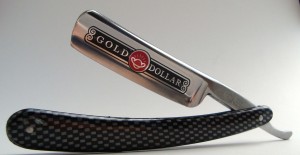
GD 208 – pure workhorse
First, the higher the number, the better the fit & finish. This means that the #66 is basically a roughly ground piece of hardened steel set in some really flimsy plastic scales. The 300’s scales are slightly better, but not really much of an improvement. However, the carbon fiber scales on the 208 are about the equivalent of Fromm & Dovo. Still cheap & plastic, but thick & rigid plastic. As such, it is advisable to stay away from any models under 200, and we will only discuss the 208, 300, & 800 models from now on.
So, how is the fit & finish? Well, it’s not up to Dovo’s standards. The 208’s logo is painted on and the stamp is lightly stamped in some cases. However, the GD factory is transitioning to laser etching. Okay, but what about the polish & grinding? Again, not up to Dovo’s standards. Even the 800 isn’t as good as Dovo’s. The 208 suffers from a lack of fit & finish. The razor is polished, but the factory doesn’t care too much about evening out the lines or making things perfectly shaped. They’re perfectly okay with leaving the razor slightly unfinished in terms of polish.
The 300 & 800 are much better off compared to the 208, however, they don’t quite equal the Dovo. That said, the tang is usually ground flat, the spine is polished and more even, the point is more uniform from piece to piece, and the logo is laser etched. I would rate the fit & finish as decent, whereas Dovo Best is good. More expensive razors such as Wacker would rate excellent.
Okay, aesthetics aside, how is the performance?
This is where the Gold Dollar will surprise you. It is by no means a Lamborghini, but it sure performs on the same level. The steel alloy used takes and holds a very good edge. Indistinguishable from Dovo. The master grind is always to spec. The stainless steel they use also performs excellently.
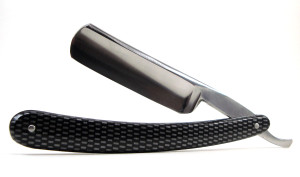
Gold Dollar #800 features a higher level of fit & finish compared to other Gold Dollars
In other words, the Gold Dollar is pure performance and not so much aesthetics.
The Verdict
Seeing as two of our four contenders have been disqualified for performance issues, the choice comes down to the Dovo and the Gold Dollar. Quite frankly there is no right choice here. However, the choice is pretty simple: on the one hand, you can choose to have a mediocre looking razor with a higher level of fit & finish, but with a very high price tag, or you can choose a not so good looking razor with a lower level of fit & finish, but with the same performance and at less than half the price.
Since aesthetics are not a factor in determining which is the best beginner straight razor and price is, the winning vote must go to the Dovo. But don’t let that stop you from buying one if you have the means and prefer it’s looks. However, I would suggest the Dovo Special in faux tortoise shell instead if you’re willing to spend a little more.
The Gold Dollar beats out the competition because it performs equally well, but costs a hell of a lot less. It’s not something you want to pass down to your children, but it is something you wouldn’t mind losing or damaging. It’s the beater car you buy to train in.
One last consideration is which one to buy. The 300 has a single stabilizer instead of a double stabilizer and has a pretty good level of fit & finish, however it comes in some funky scales. The 800 is a good choice if you want a stainless steel razor. It also has a high level of fit & finish in comparison with the 208 and features the same scales. The 208 is the budget option.

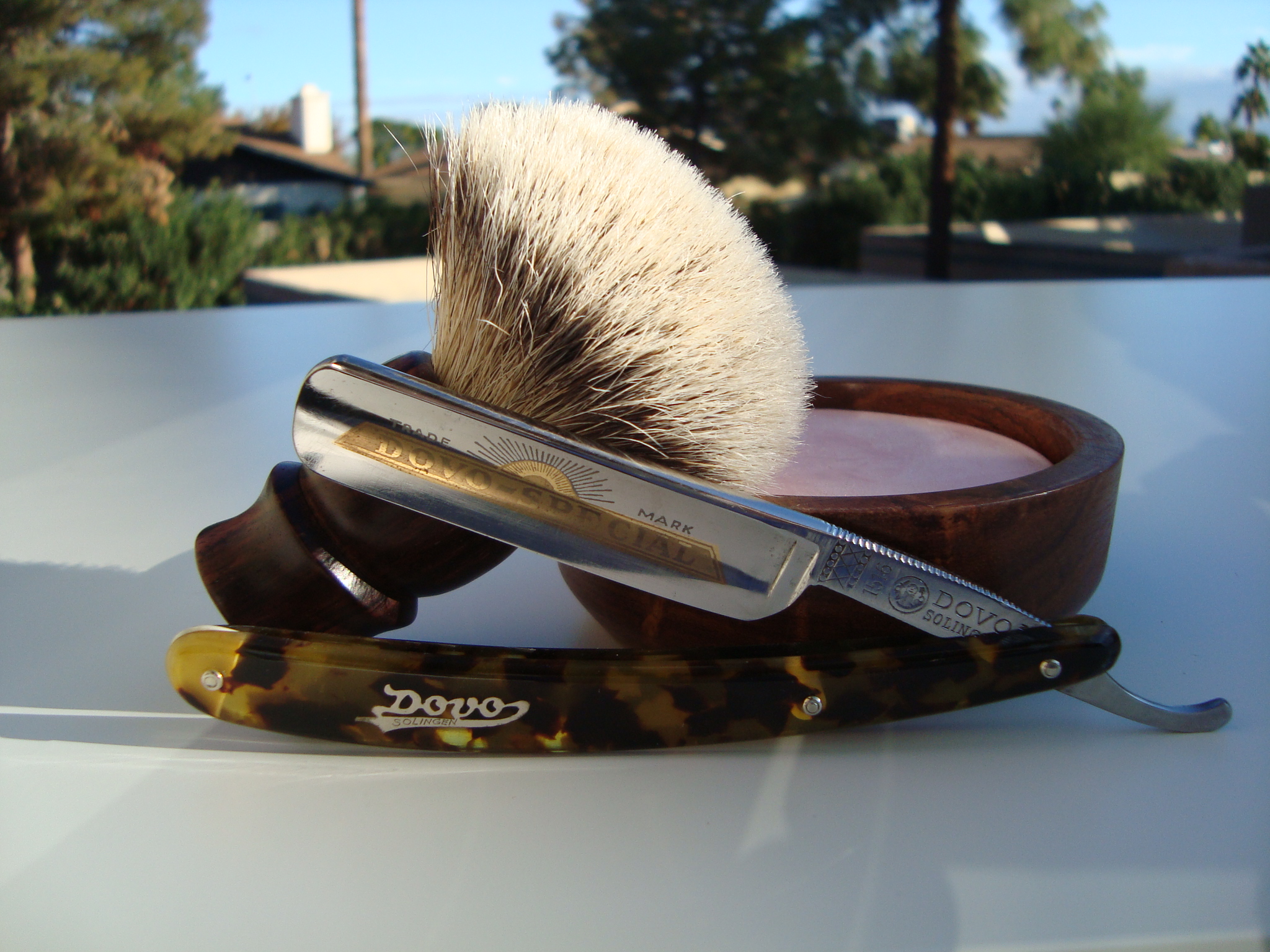
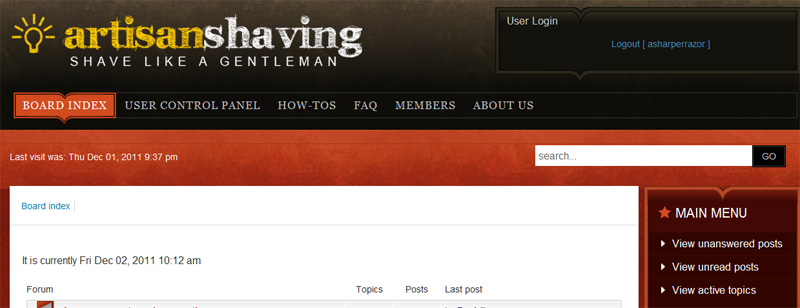



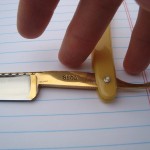
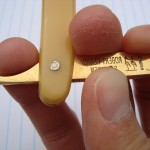
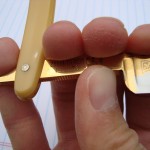
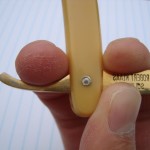
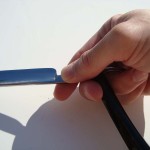
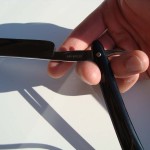
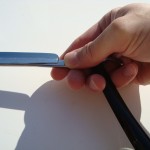
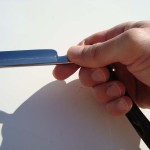
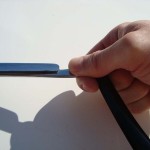
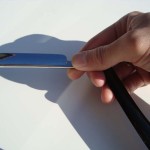
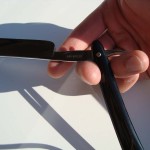
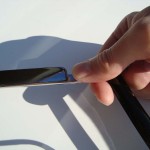
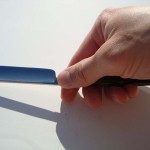
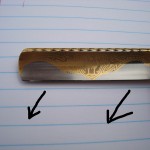
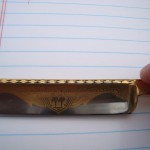
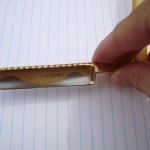
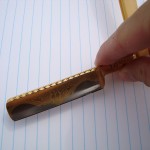
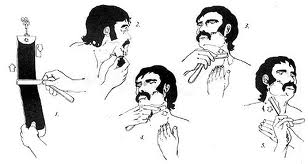

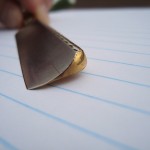
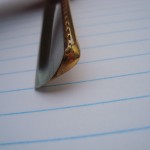
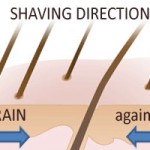
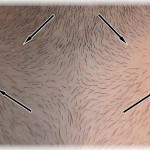








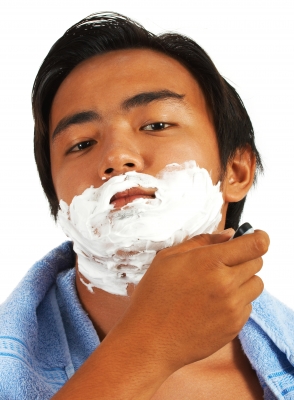
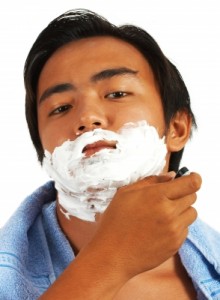






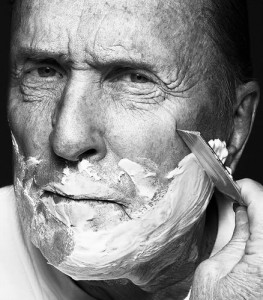
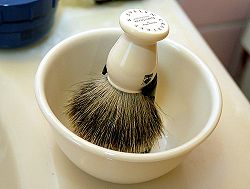
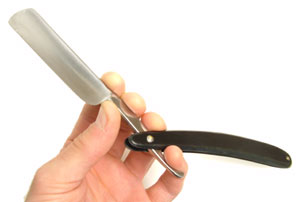 Get a firm grip upon your razor
Get a firm grip upon your razor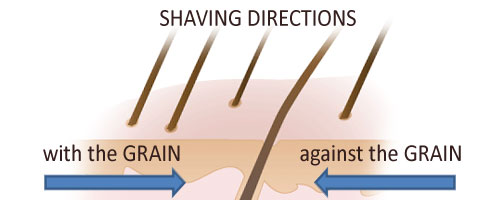
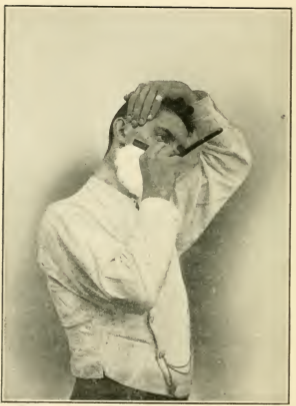 As you can see from the picture, skin stretching is essential (unless your face is perfectly taut). To stretch the skin, follow the picture. You are pulling upward and drawing the razor downwards. In other words, pull in the opposite direction of razor movement. As you shave downwards, move the left hand downwards as the lather is shaved away. Continue until you reach the jawline.
As you can see from the picture, skin stretching is essential (unless your face is perfectly taut). To stretch the skin, follow the picture. You are pulling upward and drawing the razor downwards. In other words, pull in the opposite direction of razor movement. As you shave downwards, move the left hand downwards as the lather is shaved away. Continue until you reach the jawline.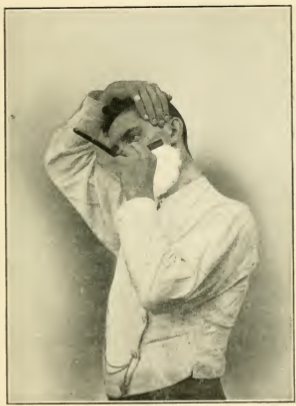
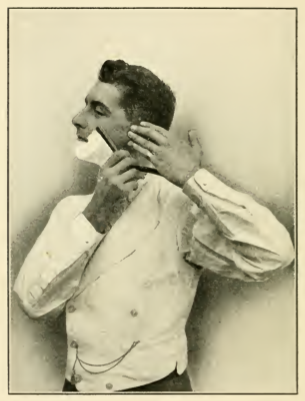
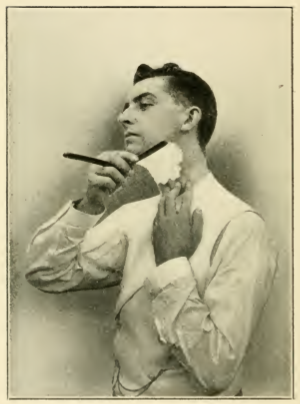
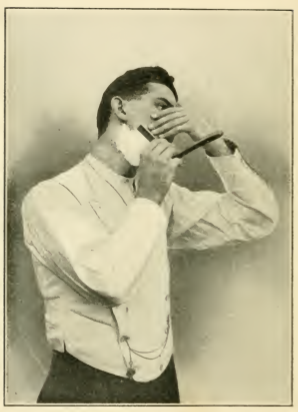
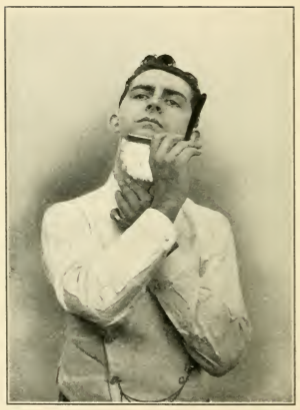 This is most certainly the hardest part. To do it, tilt your head upwards as before and pull down on your throat skin. It helps to shave the neck underneath the chin first. Then, placing the razor just under your bottom lip, shave downwards. Go slowly and take extra care. Not only is this skin extra sensitive, but your chin curves. Don’t go for extra close your first few times straight shaving. Just finish with a DE or disposable. Pride is not worth nicks and cuts.
This is most certainly the hardest part. To do it, tilt your head upwards as before and pull down on your throat skin. It helps to shave the neck underneath the chin first. Then, placing the razor just under your bottom lip, shave downwards. Go slowly and take extra care. Not only is this skin extra sensitive, but your chin curves. Don’t go for extra close your first few times straight shaving. Just finish with a DE or disposable. Pride is not worth nicks and cuts.

